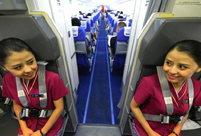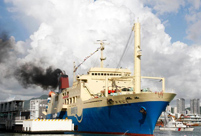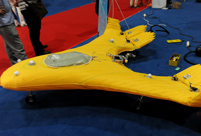 Maritime Silk Road Luxuries of the Han Dynasty
Maritime Silk Road Luxuries of the Han Dynasty
 Ceremony in honor of Confucius held in Sichuan
Ceremony in honor of Confucius held in Sichuan
 Hollywood blockbusters heats up fashion show in NW China
Hollywood blockbusters heats up fashion show in NW China
 Ciao! Chinese beauties!
Ciao! Chinese beauties!
 Naughty polar bear waves to photographer in Wapusk, Canada
Naughty polar bear waves to photographer in Wapusk, Canada
 An eye feast: BFA freshmen registration
An eye feast: BFA freshmen registration
 Top 10 most lavish weddings
Top 10 most lavish weddings
 Most amazing chi-pao beauties
Most amazing chi-pao beauties
 Observe the earth from space
Observe the earth from space
 Chinese lingerie brand arrives in Las Vegas
Chinese lingerie brand arrives in Las Vegas
In 2009, US president Barak Obama committed to building a high-speed rail network across the US. The plan has still not been implemented. Why has the US, with the world's longest railway network, failed to build itself a high-speed rail network?
Americans are not in the habit of using high-speed train as a preferred option for travel. With the development of the highway network and aviation passenger traffic since the mid-20th century, Americans are more accustomed to taking a Greyhound bus or a plane than a train. It is not easy for Obama's government to change long-standing American attitudes to travel.
Research shows that high-speed rail is suited to linking densely-populated city belts. If two cities are more than 1000 kilometers apart, high-speed rail fares are no cheaper than plane tickets. The US has a large land area but a small population and its major cities are spread far apart. As a result, the benefits of high-speed rail in the US are limited. Obama's plan to build 13 high-speed rail links seems unrealistic. America's high-speed rail technology is not sophisticated as a result of long-term underinvestment; it lags behind that of Europe, Japan and China. According to US law, 80% of high-speed trains has to be sourced from the US.
All of these factors have combined to thwart the launch of Obama’s high-speed rail project.
The article is edited and translated from《美国何以总也修不成高铁?》, source: www.haiwainet.cn, author: Tao Duanfang
 Top 10 world's highest-paid models 2014
Top 10 world's highest-paid models 2014 "Twin flowers" bloom in the air
"Twin flowers" bloom in the air The 4th China-Eurasia Expo opens in Urumqi
The 4th China-Eurasia Expo opens in Urumqi Tall girls shine at model competition
Tall girls shine at model competition Girl who cannot gain weight: She is 1, 2.9 kilograms
Girl who cannot gain weight: She is 1, 2.9 kilograms Bazinga! Watch out the 'facekini' fashion bomb attack
Bazinga! Watch out the 'facekini' fashion bomb attack Experiencing maiden voyage between Sanya and Xisha
Experiencing maiden voyage between Sanya and Xisha Chinese inflatable aircraft meets public for the first time
Chinese inflatable aircraft meets public for the first time People enjoy delicacies in Tianjin undersea tunnel
People enjoy delicacies in Tianjin undersea tunnel COMAC jumbo jet and its global rivals
COMAC jumbo jet and its global rivals Capital Spirits: the capital's first liquor bar
Capital Spirits: the capital's first liquor bar Chengdu International Auto Show
Chengdu International Auto Show 2014 int’l drone exhibition
2014 int’l drone exhibition Trainings taken by Chinese navy divers
Trainings taken by Chinese navy divers Female PLA honor guards
Female PLA honor guardsDay|Week|Month